-
Out of stock
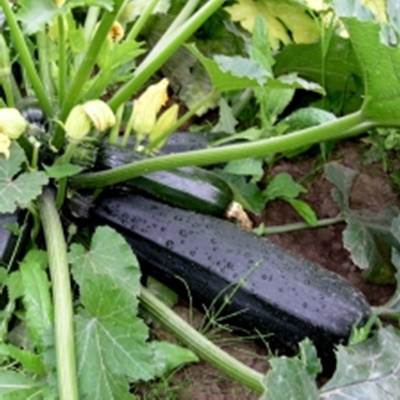 Matures in 60 days. The standard summer squash was introduced in the 1920s. Plants are productive very early and produce until feeze-up if kept picked. Best eaten when under 20cm. Black Beauty zucchini seeds are a great variety for freezing. Black Beauty zucchini is a 20th Century heirloom that won the All-American Selections prize back in 1957. It was first introduced to American market growers in the 1920s. Direct sow or transplant in late May or early June when the soil is warm. For transplants, start seeds indoors in late April or early May. Optimal soil temperature for germination: 25-35°C. Seeds should sprout in 7-14 days.
Matures in 60 days. The standard summer squash was introduced in the 1920s. Plants are productive very early and produce until feeze-up if kept picked. Best eaten when under 20cm. Black Beauty zucchini seeds are a great variety for freezing. Black Beauty zucchini is a 20th Century heirloom that won the All-American Selections prize back in 1957. It was first introduced to American market growers in the 1920s. Direct sow or transplant in late May or early June when the soil is warm. For transplants, start seeds indoors in late April or early May. Optimal soil temperature for germination: 25-35°C. Seeds should sprout in 7-14 days. -
Out of stock
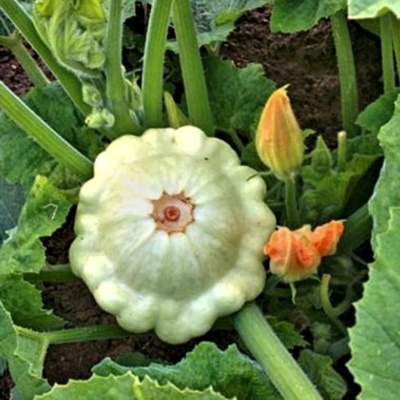 Early (45-55 days) open-pollinated variety. Young squashes are pale green, tender turning to white, strong and crunchy when ripen. Each stage has its own taste with a delicious nutty flavor. Use young, delicate, very sweet squashes up to 7.5cm (3in.) for roasting, grilling, and pickling. When 12-15cm they are great for toppings and soups with a zucchini-like texture. Double culture for summer use and long-term (winter) storage.
Early (45-55 days) open-pollinated variety. Young squashes are pale green, tender turning to white, strong and crunchy when ripen. Each stage has its own taste with a delicious nutty flavor. Use young, delicate, very sweet squashes up to 7.5cm (3in.) for roasting, grilling, and pickling. When 12-15cm they are great for toppings and soups with a zucchini-like texture. Double culture for summer use and long-term (winter) storage. -
Out of stock
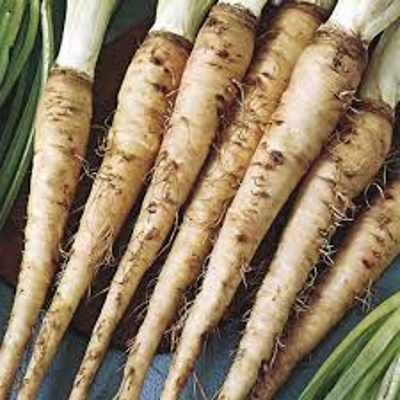 Roots are long and tapered like carrots, with off-white skin and white flesh. The upright, grass-like leaves and edible, second-summer purple flowers distinguish it from scorzonera. An excellent storage root, salsify can also be overwintered for spring harvest, like with parsnips. This is a biennial vegetable which averages 20-25 cm long and 2.5 cm round.
Roots are long and tapered like carrots, with off-white skin and white flesh. The upright, grass-like leaves and edible, second-summer purple flowers distinguish it from scorzonera. An excellent storage root, salsify can also be overwintered for spring harvest, like with parsnips. This is a biennial vegetable which averages 20-25 cm long and 2.5 cm round. -
Out of stock
 Salsify is popular in Europe. This root vegetable is eaten grated or cooked. As a relative to the lettuce family, tt has grass-like foliage and purple flowers in the second year. The foliage and flowers are edible and the roots can be left in the ground until needed. It is also known as Oyster vegetable. In soils which freeze cover with a thick layer of straw and a row tunnel to harvest during winter months.
Salsify is popular in Europe. This root vegetable is eaten grated or cooked. As a relative to the lettuce family, tt has grass-like foliage and purple flowers in the second year. The foliage and flowers are edible and the roots can be left in the ground until needed. It is also known as Oyster vegetable. In soils which freeze cover with a thick layer of straw and a row tunnel to harvest during winter months. -
Out of stock
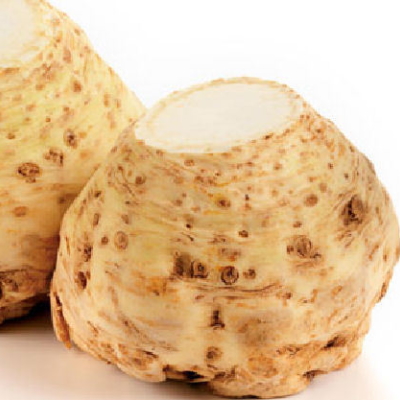 Improved Giant Prague variety. The giant root is excellent for stews and soups. Start 8-12 weeks indoors.
Improved Giant Prague variety. The giant root is excellent for stews and soups. Start 8-12 weeks indoors. -
Out of stock
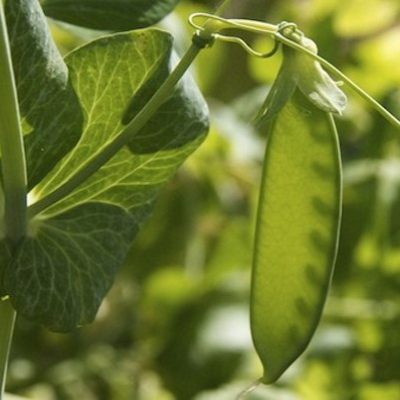 Certified Organic. Sweet peas inside big, sweet pods combine for a delicious flavor treat. High yields of large, medium-green, flat pods follow white-flowered vines. High resistance to Fusarium wilt race 1, pea enation mosaic virus, and powdery mildew. Eat fresh, add to salads or use in a stir fry.
Certified Organic. Sweet peas inside big, sweet pods combine for a delicious flavor treat. High yields of large, medium-green, flat pods follow white-flowered vines. High resistance to Fusarium wilt race 1, pea enation mosaic virus, and powdery mildew. Eat fresh, add to salads or use in a stir fry. -
Out of stock
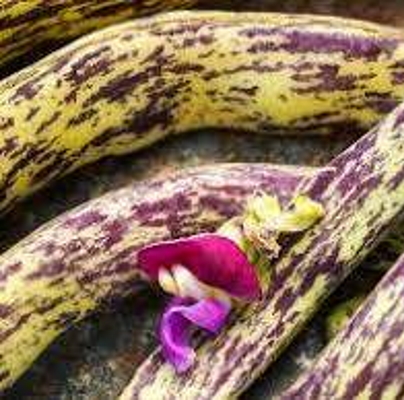 For bean lovers everywhere, this wax bush bean has an outstanding flavour, although we found that they take a bit longer to cook than other fresh beans, they quickly became a favourite. This charming wax bush bean is an old heirloom from Europe. It has yellow-green pods that are streaked and mottled with a gorgeous purple. Plants grow to be between 60-75 cm tall in a bush growth habit. The flavour of the pods is excellent and a must-try! This bean can be harvested as a green bean when pods are crisp or left to mature further and harvested as a shelling bean. The seeds are a mottled brown and very tasty. These pods are versatile both in their use, and their unique colouring. They can be used either fresh or as dried beans, and there is no other variety with coloring quite like theirs.
For bean lovers everywhere, this wax bush bean has an outstanding flavour, although we found that they take a bit longer to cook than other fresh beans, they quickly became a favourite. This charming wax bush bean is an old heirloom from Europe. It has yellow-green pods that are streaked and mottled with a gorgeous purple. Plants grow to be between 60-75 cm tall in a bush growth habit. The flavour of the pods is excellent and a must-try! This bean can be harvested as a green bean when pods are crisp or left to mature further and harvested as a shelling bean. The seeds are a mottled brown and very tasty. These pods are versatile both in their use, and their unique colouring. They can be used either fresh or as dried beans, and there is no other variety with coloring quite like theirs. -
Out of stock
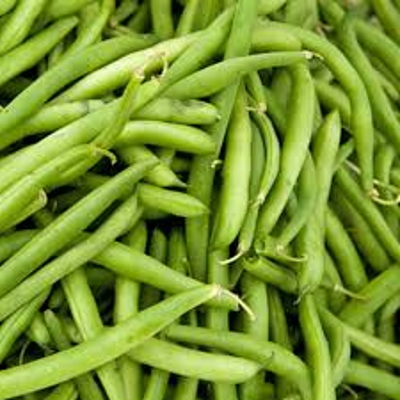 The tendergreen variety of bean produces abundant yields of 12-18 cm pods. Tendergreens are resistant to common bean mosaic. This is a bush type bean plant, so it can grow independent of a pole or support. This plant is best suited for a more advanced gardener, as the window for harvesting is rather short, about two weeks. It is beneficial to sow a few different plants about ten days apart. These plants pay off well, with tender and delicious green pods with a mild and delicious taste. This is a great main crop variety for gardeners who enjoy freezing and canning.
The tendergreen variety of bean produces abundant yields of 12-18 cm pods. Tendergreens are resistant to common bean mosaic. This is a bush type bean plant, so it can grow independent of a pole or support. This plant is best suited for a more advanced gardener, as the window for harvesting is rather short, about two weeks. It is beneficial to sow a few different plants about ten days apart. These plants pay off well, with tender and delicious green pods with a mild and delicious taste. This is a great main crop variety for gardeners who enjoy freezing and canning. -
Out of stock
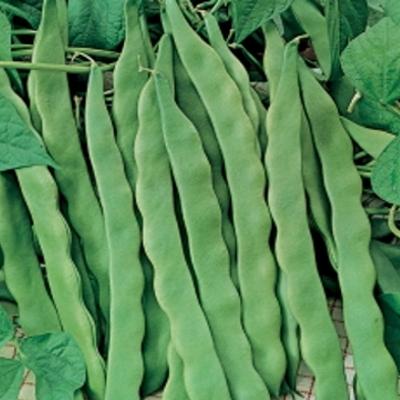 Admires bean is a dwarf, medium early variety that produces stringless, green, broad pods reaching 15 cm in length. They strike with their excellent taste and tenderness. White seeds that contain large amounts of proteins, carbohydrates, and B vitamins are hidden within the pods. The best European bush slicing bean! Superior in taste and yields. Produces flat beans which are 15 cm long and 2.5 cm wide. This is an early healthy variety.
Admires bean is a dwarf, medium early variety that produces stringless, green, broad pods reaching 15 cm in length. They strike with their excellent taste and tenderness. White seeds that contain large amounts of proteins, carbohydrates, and B vitamins are hidden within the pods. The best European bush slicing bean! Superior in taste and yields. Produces flat beans which are 15 cm long and 2.5 cm wide. This is an early healthy variety. -
Out of stock
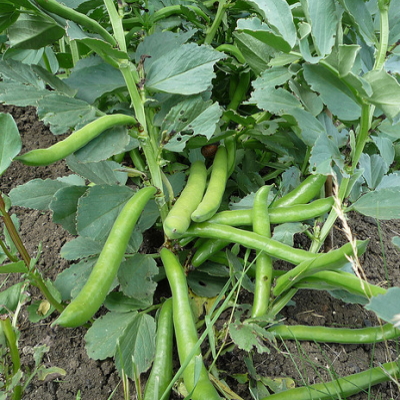 The best bean to try in 2021. Unlike most beans, fava beans prefer cool weather and are best planted in early spring as soon as the soil can be worked. Sow 2.5 cm deep, 10-12 cm apart, in rows 40-90 cm apart or use wide-bed style planting, giving each plant 25 sq.cm of space. Vroma produces large, 15-18 cm pods with 4–5 large seeds. Cook like a shell bean when the seeds are pale green or wait until pods are dry for shelled beans. Strong, heat-tolerant plants resist lodging. Light brown seeds. These lovely plants reach 1-1.5 M high and are self-supporting.
The best bean to try in 2021. Unlike most beans, fava beans prefer cool weather and are best planted in early spring as soon as the soil can be worked. Sow 2.5 cm deep, 10-12 cm apart, in rows 40-90 cm apart or use wide-bed style planting, giving each plant 25 sq.cm of space. Vroma produces large, 15-18 cm pods with 4–5 large seeds. Cook like a shell bean when the seeds are pale green or wait until pods are dry for shelled beans. Strong, heat-tolerant plants resist lodging. Light brown seeds. These lovely plants reach 1-1.5 M high and are self-supporting. -
Out of stock
 Growing on an upright bush, bright yellow, stringless pods of 10-15 cm are easy to spot among green foliage. Delicious buttery flavour. When planted in full sun they are prolific producers reaching a height of 37-50 cm tall and spread 37-50 cm.
Growing on an upright bush, bright yellow, stringless pods of 10-15 cm are easy to spot among green foliage. Delicious buttery flavour. When planted in full sun they are prolific producers reaching a height of 37-50 cm tall and spread 37-50 cm. -
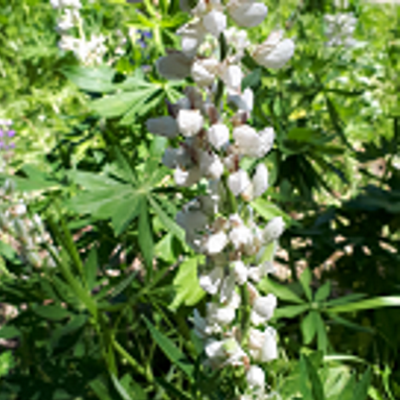
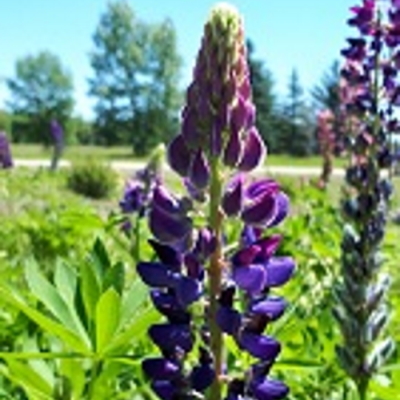 Stunning, brightly-colored spikes create a strong feature in the early summer garden. Its pea-like flowers grow in dense spires. Scatter through cottage or wildflower gardens or mass plant in the border. Purple, deep blue, red, pink, yellow, cream, and white. Lupins prefer a full sun position but will also grow well in semi-shade, they do not grow well in full shade. They grow well in a wide variety of soil conditions although chalky and/or waterlogged soil will be a problem if not improved before planting. If the ground is clay, lots of compost dug into the planting area will greatly increase their chances of surviving winters. Once your Lupins start to flower create new plants if you want more of a certain colour, gently separate the little offset at the base of a mature plant and replant it.
Stunning, brightly-colored spikes create a strong feature in the early summer garden. Its pea-like flowers grow in dense spires. Scatter through cottage or wildflower gardens or mass plant in the border. Purple, deep blue, red, pink, yellow, cream, and white. Lupins prefer a full sun position but will also grow well in semi-shade, they do not grow well in full shade. They grow well in a wide variety of soil conditions although chalky and/or waterlogged soil will be a problem if not improved before planting. If the ground is clay, lots of compost dug into the planting area will greatly increase their chances of surviving winters. Once your Lupins start to flower create new plants if you want more of a certain colour, gently separate the little offset at the base of a mature plant and replant it.